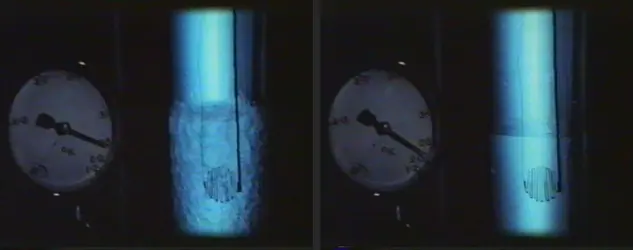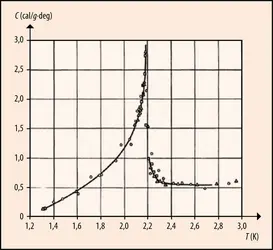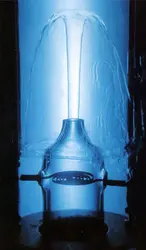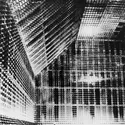SUPERFLUIDITÉ
Article modifié le
Bibliographie
P. W. Anderson, « Considerations on the Flow of Superfluid Helium », in Reviews of Modern Physics, no 38, New York, 1966, p. 298
S. Balibar, « The discovery of superfluidity », in Low TemperaturePhysics, vol. 33, no 146, pp. 441-474, 2007
F. Chevy & J. Dalibard, « Superfluidity in Fermi gases », in Physics World, no 18, 2005
R. P. Feynman, « Application of quantum mechanics to liquid helium,in Progress in Low TemperaturePhysics, vol. I, Gorter, Amsterdam, 1955
W. Ketterle, « Bose-Einstein condensation in dilute atomic gases: atomic physics meets condensed matter physics », in Physica B. Condensed Matter, vol. 280, no 1-4, pp. 11-19, 2000
A. J. Leggett, « Superfluidity », in Reviews of Modern Physics, no 71, S318, 1999
E. M. Lifshitz & L. P. Pitaevskii, « Statistical Physics », t. II, in Landau and Lifshitz Course of TheoreticalPhysics », vol. IX, iPergamon Press, Oxford, 2e éd. 1980
D. Pines & P. Nozieres, The Theory of Quantum Liquids, Westview Press, Boulder, 1999
J. Wilks, The Properties of Liquid and Solid Helium, Clarendon Press, Oxford, 1970
J. Wilks & D. S. Betts, An Introduction to LiquidHelium, Clarendon Press, Oxford University Press, 1987.
Bibliographie spécifique
A. A. Abrikosov, « On the magnetic properties of superconductors of the second group », in Journal of Experimental and TheoreticalPhysics, vol. 5, pp. 1174-p. 1182, 1957
G. Agnolet, D. F. McQueeney & J. D. Reppy, « Kosterlitz-Thousless transition in helium films », in Physical Review B, vol. 39, 1989
J. F. Allen, R. Peierls & Z. Uddin, « Heat conduction in liquid helium », in Nature, vol. 140, no 62, 1937
D. R. Allum, R. M. Bowley & P. V. E. McClintock, « Evidence for Roton Pair Creation in Superfluid 4He », in Physical ReviewLetters, vol. 36, 1313, 1976
S. M. Apenko, « Critical temperature of the superfluid transition in bose liquids », in Physical Review B, vol. 60, p. 3052, 1999
O. Avenel & É. Varoquaux, in Physical ReviewLetters, vol. 55, p. 2704, 1985
S. Balibar, « Horst Meyer and quantum evaporation »,in Low TemperaturePhysics, vol. 185, no 209, 2016
G. H. Bauer, D. Ceperley& N. Godenfeld, in Physical Review B, vol. 61, 2000
D. J. Bishop & J. D. Reppy, in Physical ReviewLetters, vol. 40, 1978
S.N. Bose,« Planck’s law and light quantum hypothesis », in ZeitschriftfürPhysik,vol. 26, 1924
A. Einstein,PreussichenAkademie der Wissenschaften, Phys.-Math. Klasse, Sitzungsberichte, pp. 261-267, 1924 ; pp. 3-14, 1925
T. Ellis & P. V. E. McClintock,« The breakdown of superfluidity in liquid 4he V. measurement of the Landau critical velocity for roton creation »,inPhilosophical Transactions of the Royal Society A, vol. 315, no 1532, 1985
I. Ferrier-Barbut, M. Delehaye, S. Laurent et al.,« A mixture of Bose and Fermi superfluids », in Science, vol. 345, no 6200, pp. 1035-1038, 2014
R. P. Feynman, « Application of quantum mechanics to liquid helium », in Progress in Low TemperaturePhysics, vol. I, Amsterdam, 1955
P. Grüter, D. Ceperley & F. Laloe, « Critical temperature of Bose-Einstein condensation of hard-sphere gases », in Physical ReviewLetters, vol. 79, no 19, 1997
D. G. Henshaw & A. D. B. Woods, « Modes of atomic motions in liquid helium by inelastic scattering of neutrons », in Physical Review, vol. 121, 1961
W. H. Keesom & K. Clusius, « Specific heat of liquid helium », in Comm. Phys. Lab. Univ. Leiden, 219e, 42, 1932
W. H. Keesom & A. P. Keesom, « New measurements on the specific heat of liquid helium », in Physica, vol. 2, no 1, 1935
J. M. Kosterlitz & D. J. Thouless, in Journal of PhysicsC, vol. 6, 1972
J. A. Lipa, J. A. Nissen, D. A. Stricker et al., « Specific heat of liquid helium in zero gravity very near the lambda point », in Physical Review B, vol. 68, no 17, 174518, 2003
S. Moroni & M. Boninsegni, « Condensate fraction in liquid 4He », in Journal of Low TemperaturesPhysic, vol. 136, 2004
D. W. Osborne, B. Weinstock & B. M. Abraham, « Comparison of the flow of isotopically pure liquid He3 and He4 »,in Physical Review, vol. 75, 1949
V. P. Peshkov,in Journal of Physics USSR, vol. 8, 1944 ; vol. 10, 1946
A. I. Sokolov & M. A. Nikitina, « Pseudo-expansion and critical exponents of superfluid helium », in Physica A, vol. 444, 2016.
Accédez à l'intégralité de nos articles
- Des contenus variés, complets et fiables
- Accessible sur tous les écrans
- Pas de publicité
Déjà abonné ? Se connecter
Écrit par
- Sébastien BALIBAR : directeur de recherche émérite CNRS, Laboratoire de physique de l'École normale supérieure, Paris, membre de l'Académie des sciences
Classification
Médias
Autres références
-
BOSONS ET FERMIONS
- Écrit par Bernard PIRE
- 1 709 mots
- 1 média
– Le phénomène de superfluidité de l’hélium-4 porté à une température inférieure à 1,8 kelvin est la signature du fait que tous les atomes de l’échantillon abandonnent leur liberté individuelle pour réagir de manière collective. -
ÉTAT DE LA MATIÈRE, notion d'
- Écrit par Bernard PIRE
- 1 521 mots
...quelques kelvins [0 K ≈ – 273 0C]), cette propriété a été ensuite observée dans certains matériaux à des températures plus facilement accessibles. La superfluidité est la disparition de la viscosité de quelques liquides formés par des atomes d'hélium. Ces deux comportements sont qualitativement expliqués... -
FLUIDE, physique
- Écrit par Étienne GUYON
- 1 356 mots
Signalons enfin le cas des superfluides. L'isotope 4 de l'hélium liquide (4He) perd sa viscosité au-dessous de 2,17 kelvins. L'existence d'écoulements persistants et la capacité de s'écouler à travers des pores de taille atomique caractérisent cet état. L'isotope 3 de l'hélium (... -
FROID, physique
- Écrit par Jean MATRICON et Georges WAYSAND
- 4 043 mots
- 2 médias
Lasuperfluidité de l'hélium apparaît lorsqu'on refroidit de l'hélium liquide, par exemple en diminuant la pression, ce qui produit l'évaporation du liquide et donc son refroidissement ; à 2,2 K, le liquide change brutalement de propriétés physiques, sa viscosité devient... - Afficher les 16 références
Voir aussi
- HÉLIUM 3
- ÉTATS DE LA MATIÈRE
- ÉCOULEMENTS
- CHALEUR MASSIQUE ou CHALEUR SPÉCIFIQUE
- GAZ MONOATOMIQUES
- FERMIONS
- EXCITATION, physique
- BOSONS
- HÉLIUM
- QUANTIQUE MÉCANIQUE
- LEGGETT ANTHONY J. (1938- )
- SCANNER, médecine
- OSHEROFF DOUGLAS DEAN (1945- )
- CRYOPHYSIQUE ou PHYSIQUE DES BASSES TEMPÉRATURES
- HÉLIUM 4
- EFFET FONTAINE, physique
- TOURBILLON QUANTIQUE
- THERMOMÉCANIQUE EFFET
- TEMPÉRATURE DE TRANSITION
- PHYSIQUE DES PARTICULES
- PHYSIQUE HISTOIRE DE LA






